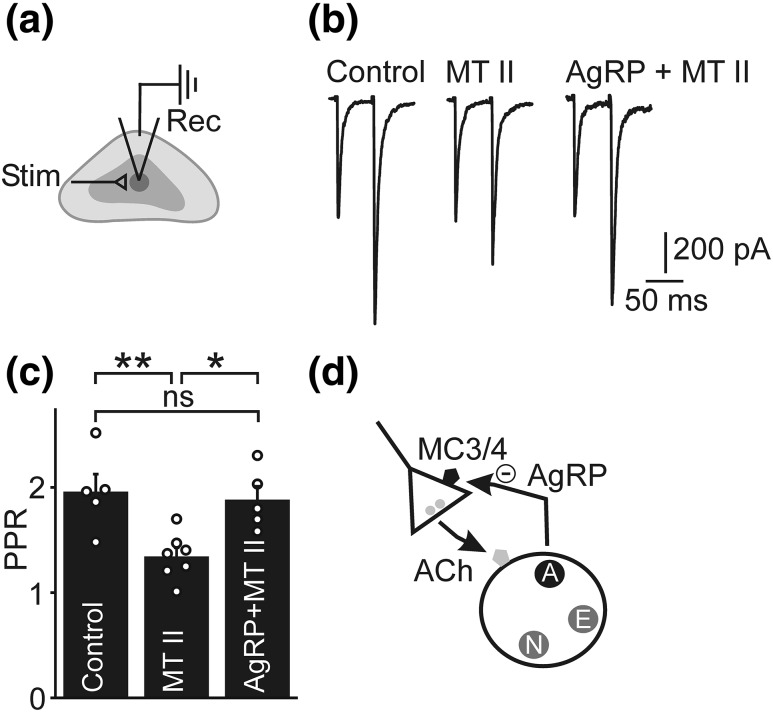Figure 5.
MC3/4 receptor agonist and AgRP modulate preganglionic → chromaffin cell synaptic strength. (a) Schematic of experiment. EPSCs were evoked in an adrenal slice preparation by focal stimulation (stim) of preganglionic axons and recorded (rec) in chromaffin cells voltage clamped at −60 mV. (b) Representative recording of evoked EPSCs. Two presynaptic depolarizations evoked paired pulse facilitation that was reduced after exposure to 1 µM melanotan (MT) II; this effect was absent in the presence of 200 nM AgRP. (c) Group data showing that the reduction in PPR evoked by MT II was prevented by coincubation with 200 nM AgRP. Histogram shows mean ± SEM (control, n = 5 cells from 3 animals; MT II, n = 7 cells from 3 animals, MT II + AgRP, n = 5 cells from 3 animals). (d) Working model of the experimental results. Activation of presynaptic MC3/4 receptors increases the strength of the cholinergic preganglionic → chromaffin cell synapse; exogenously applied AgRP prevents this effect. AgRP is expressed by a subset of chromaffin cells, suggesting that it acts as a cotransmitter that locally regulates catecholamine secretion. Because fasting increases both epinephrine release and AgRP expression, the role of the AgRP-mediated negative feedback loop may be to prevent excessive catecholamine release during periods of high sympathoadrenal activity. For simplicity, the adrenal cotransmitters [epinephrine (E), NPY (N), and AgRP (A)] are shown contained in separate populations of dense core granules. **P < 0.01, *P < 0.05. ns, not significant.

